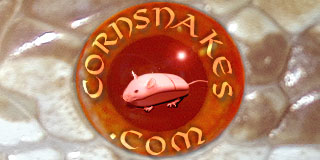From my retired SerpenCo.com website.
Hypomelanistic Lavender Corn Snake
This seemed like a natural genetic combination to do with the Lavender line. But the first couple of years that I should have been producing them, the numbers just didn't add up. I was beginning to doubt my understanding of what the Lavender really is. The combination of Hypomelanism and Lavender seemed to be harder to produce than simple Mendelian genetics would predict. The numbers produced just didn't add up to expectations, but I can pin that problem all on just bad luck. Last year (2000), I produced numbers that were more in keeping with what one would expect, and by breeding animals with either one of the two genes being expressed genotypically and the other being heterozygous left fewer variables to chance or luck. The real confusion was that some very light varieties of the Lavender can appear to be Hypomelanistic Lavenders. This is not too unusual with many of the cultivars based partially on Hypomelanism, but this did throw me a curve for a little while. When I got a reasonable number of guaranteed true-blue Hypomelanistic Lavenders to hatch out, the difference in the babies was dramatically apparent. However, again as in many forms of Hypomelanism, I'm not at all certain how this will be retained in fully mature adults.
Admittedly, I don't have a heck of a whole lot of these, and darn few adults. So I can't really give you a solid description of what to expect an adult to look like. Babies can vary from very light pastel lavender colored to pretty outrageous pale pink and orange creatures. No telling what selective breeding within this cultivar will produce down the road, but I expect some pretty eye-popping animals are in store for us from this line. Figuring on the amount of variation with all of the flavors of Hypomelanism and then throw Lavender into that mix, you can certainly expect some surprises when the eggs begin hatching.
Several people who have seen this cultivar felt they should be called 'Cotton Candy Corns', but I haven't quite warmed up to that name. But I think a new name is going to have to be coined, if for no other reason than to shorten it to where you don't sprain your tongue just trying to say it. But I'd feel much more comfortable if I had a batch of adults to observe before I settled on a name so I don't stub my toe on another Lavender/Mocha mess like I did several years back.
By the way, VERY FEW of these will be available this year. Mostly because I've been marking so many of them as 'keepers'!
